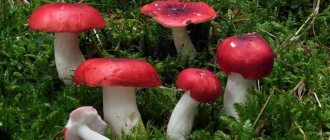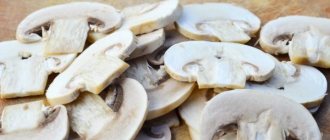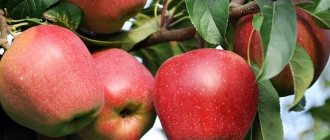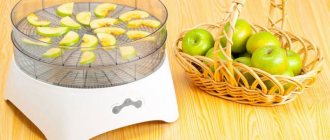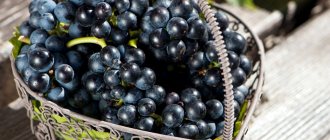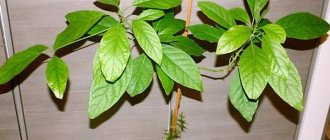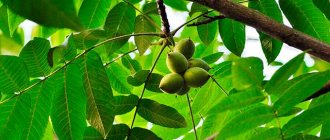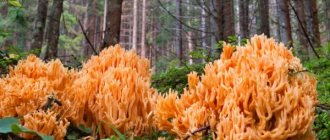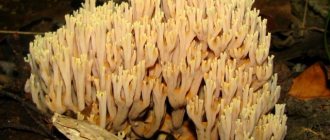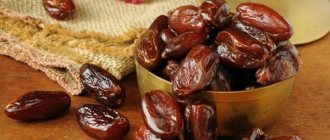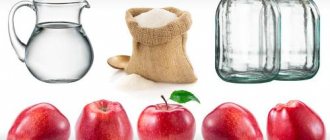The apple harvest, which you have already collected and sent for storage, can actually tell you something about the state of their “health”, lack of vitamins, and sometimes about dangerous diseases. We carefully examine the fruits and draw conclusions.
In order to determine what important points you missed in caring for apple trees, sometimes even one cursory glance at the fruit is enough. So, what invisible problems of garden crops can certain signs in the appearance of apples sent for storage tell about?
The apples have become loose, brown and tasteless
plumpness of apples
. After short storage, the fruit pulp turns brown, becomes loose, mealy, and the skin is easily pressed through with a finger. Such apples lose their taste and quickly rot. The reason is a lack of calcium and excess nitrogen. Sometimes plumpness affects apples picked too late.
Solution
. The recommendations are the same as for glassy apples. Next year, reconsider your fertilizer application schedule: very often, excess nitrogen is the result of excessive fertilizing with nitrogen fertilizers, and a lack of calcium can be caused by excessive intake of magnesium and potassium. Harvest apples on time, do not let ripe fruits remain on the apple tree for a long time.
Natural ability or modification?
This raises the question of whether genetic modification plays a role in keeping the flesh from changing color. It actually makes you wonder if opal apples can actually be safe to eat, as they have an ability that other varieties don't have. Fortunately, opal apples are reportedly completely non-GMO. This allows us to state that this ability of an apple to retain the color of its pulp is a natural characteristic of this variety.
Apples are hard, tasteless, have hard crusts on the skin
Apple sampling
. Light spots up to 1 cm in size appear in the pulp, which gradually turn brown, and the structure of the pulp begins to resemble a cork. Dry, crusty spots may appear on the skin. Gradually they swell and become deformed. Suberization is a characteristic sign of boron deficiency. Even before harvesting, it can manifest itself by thickening and darkening of the leaves, suberization of their veins; with acute boron starvation, the leaves fall off and the top of the tree dies. Apple and pear trees are considered high boron crops, so similar problems may occur in pears.
Solution
. Foliar feeding: 10-20 g of powder per 10 liters of water. Treatment is carried out in the evening, after sunset. The first time is at the beginning of leaf dissolution, the second time is after 5-7 days. Feeding with boric acid at the root is carried out only in case of severe and obvious boron starvation. The drug is diluted at the rate of 0.1 - 0.2 g per 1 liter; The contents of the sachet are dissolved in 1 liter of hot water, then diluted with water at room temperature to the required amount. Before applying fertilizer, water the trees well, since boric acid can burn the roots on dry soil.
The apples are wrinkled
Some of the fruits suddenly became wilted, although outwardly no other signs seemed to be observed.
What is the reason
There can be at least two of them, and the second one is completely unsafe. First of all, the so-called “withering” of apples can be associated with improper picking or long-term storage: over time, even the hardest fruits inevitably begin to fade. A serious reason to think is the situation when fruits collected not so long ago are withering. At best, this indicates mechanical damage to the apples: as a result of damage to the skin, the moisture evaporates from them faster. A more terrible cause is a bacterial burn. In this case, the wilting of apples is combined with dry and curled leaves on the trees, weeping ulcers on its bark and the appearance of white viscous exudate from cracks. Moreover, the fruits begin to wither while still on the tree branch, and subsequently rot.
What to do
In the case of ordinary apple wilting, simply throw away the spoiled fruits so that they do not spread rot, and next time be more careful in removing the harvest from the branches, and use the damaged specimens for preparing apple dishes.
In the case of a bacterial burn, things are much more complicated. The fruits still need to be thrown away, severely damaged trees should be cut down and burned, and the rest should be saved. To do this, remove the rough bark from areas of the tree from which milky-white drops browning in the air are visible, then dissolve the Ofloxacin tablet in 1 liter of water, soak a piece of gauze in this solution and place it on the damaged area of the tree, wrap it with film on top and secure it her.
Don't forget about prevention. At the very beginning of sap flow, water the apple trees at the root with Previkur Energy. During the swelling of the buds, you need to treat the trees with Ampicillin in the amount of 1 g per 10 l, and additionally add a glass of sugar and 1 tbsp to the solution. honey
Before and after flowering, treat the garden with a mixture of Scora and Fitolavin.
- Bacterial burn - what to do if the tree “burns”
Are the trees in your garden turning into embers? Most likely, they were struck by a dangerous and common disease - bacterial burn.
The apples are very small
Potassium deficiency
. The fruits are unusually small compared to the norm for their variety and previous harvests, and are poorly stored; at the same time, flowering could be unusually abundant. If, in addition, the orchard suffered from frost in the winter, and in the middle of summer the leaves were wrinkled, curled and died along with the petioles, we can talk about potassium starvation of the plants. Potassium deficiency is often characteristic of light and especially peaty soils.
Solution
. During the next autumn digging of the soil, add (azofoska, nitroammofoska or special autumn ones). Industrial fertilizers can be replaced with conventional fertilizers. Phosphorus-potassium fertilizing not only replenishes the deficiency of microelements, but also increases the frost resistance of fruit trees. Remember that potassium is an antagonist of calcium and displaces it from the soil, so strictly follow the dosage of fertilizers.
Sweet and sour apple varieties
The taste of apples largely depends on the ratio of sugar and acids. It has a special name - sugar-acid ratio. For dessert apples it should be at least 20-34. It has been noticed that southern varieties are generally sweeter than apples from the middle zone. Acids in the south - about 0.3%, sugars - up to 11%; in more northern regions – 0.7%, sugar – 9%. But varieties with a predominance of sugar over acids can be found among representatives of any climate zone.
Some of them are of ancient selection (Arkad yellow, Korobovka, Medok, Mironchik). And there are also new ones, created relatively recently. These are Lungwort, Cypress, Candy, Scarlet Sweetness. Breeders specifically grow such varieties, knowing that they have a large audience.
Apples rot
Brown spots with clear outlines appear on the fruits, then they stratify into dark and light, slightly pinkish, concentric circles. The pulp becomes bitter and has an unpleasant odor, apples quickly deteriorate, and rot easily spreads from diseased fruits to healthy ones. Storing apples in the cold does not protect against disease, since rot can develop even at temperatures around zero.
Solution
. The fungi that cause the disease settle on open wounds after improper or careless pruning and gradually move to the fruits. strictly according to technology, disinfect tools when moving from tree to tree, be sure to cover large cuts with varnish or Rannet paste.
Concentric circles of gray velvety growths appear on the apple, and the fruit quickly turns black.
Solution
. Preventive measures are the same as against bitter rot.
New sweet varieties
Among the new sweet varieties we can mention Elena, an early summer variety. The fruits are beautiful, sweet, with a honey flavor. It begins to bear fruit in the second year. The fruits ripen a week earlier than White filling.
Belarusian sweet is a late variety. The weight of one apple reaches 200 g. The pulp is loose, aromatic, with a pleasant sourness. The fruits stick well to the branches. Ripens in October, stored until January. The variety is resistant to scab.
Apples dry out and wrinkle
Withering
. Wilting of apples is manifested in the fact that the skin wrinkles, the pulp becomes tasteless and loose. For an apple that has been stored for a long time (especially if the variety is not a shelf-stable variety), this is the norm; If apples that were picked quite recently fade, this may be a consequence of mechanical damage during picking: skin injuries lead to accelerated loss of moisture.
Solution
. Remove fruits for long-term storage as carefully as possible. Do not store damaged apples; it is better to eat them immediately. Remove fruits with signs of wilting from storage immediately, as they can become sources of rot.
Apples have become transparent
As usual, you cut an apple in half and found clear, watery areas inside. This is otherwise called glassiness of the fruit.
What is the reason
Your fruit trees lack calcium, which is responsible for the strength of their cell walls. With a lack of this element, cell walls are depleted, damaged and deprived of juice.
What to do
Depleted apples must be urgently separated from other fruits and eaten as soon as possible. After this, you should check the soil: it may be acidified. It can be helped by adding dolomite flour to the trunk circles of trees in the fall when digging at the rate of 100-150 g per 1 sq.m. A month before the next harvest, the trees are treated with a 1% solution of calcium chloride, and two weeks later the procedure is repeated.
The apples have turned brown
Browning or tanning of apples
. The skin turns brown, but the quality of the pulp is preserved. Such apples are poorly stored and are susceptible to rot. The reason for browning is unfavorable growing and storage conditions. Excess moisture and nitrogen in the soil and shading of apple trees make the fruits potentially susceptible to sunburn, and high humidity and temperature changes in storage trigger this process.
Solution
. Review your garden care methods: watering and fertilizing rates, pruning methods. Try to create conditions in the storage that are not conducive to apples turning brown.
The apples have darkened inside
Sharply defined brownish spots appear on the skin, the flesh underneath is slightly damaged. A similar problem is low temperature fruit decay, where dark spots first appear on the flesh and gradually spread until only a thin layer of healthy tissue remains under the skin. Apples that show signs of scorching and decay rot easily. The cause of burns is too low temperature and high humidity in the storage or failure to meet harvest deadlines, and apples collected from heavily pruned young trees are often susceptible to low-temperature decay of fruits.
Solution
. Carry out all garden work on time; try to improve the conditions in the storage. Follow the garden pruning schedule and technology.
Beneficial properties of apples
Honey apples contain a large amount of vitamin C. There are 20 mg of it in 100 g of pulp. The vitamin helps strengthen the immune system and restore the strength of a weakened body.
The acids found in apples of any variety prevent the processes of decay in the intestines. A large amount of fiber helps regulate the activity of the digestive tract.
In order for the heart to perform its functions as long as possible, it needs potassium. Apples contain almost 300 mg of this element per 100 g. Iron found in apples takes part in the formation of red blood rings. There is chromium, magnesium, manganese.
The amount of nutrients depends on the variety of apples and the conditions in which they ripened. But in any case, there are much more of them than in other fruits.
Apples have black spots, cracks, crusts and dents
Scab
. The skin of the fruit cracks and becomes covered with brown-black growths that look like mold spots, the fruits become deformed, and lumps and dents appear. 2-3 weeks after the buds open, scab appears on the leaves in the form of velvety olive spots, which then turn black. As the disease progresses, the leaves fall off and blisters appear on young branches. Scab is caused by a fungus, the development of which is favored by wet and cool spring, heavy dew and warm rains. Poor garden care and neglect of preventive treatments contribute to the rapid spread of the disease.
Solution
.
If diseased fruits are found in storage, they are immediately removed. In autumn, carrion, fallen leaves and mummified fruits must be removed. Dried branches are cut out, the trunks are cleared of old bark and wrapped. All plant residues must be burned; putting them into compost is unacceptable. After leaf fall, eradicative spraying of the crowns of fruit trees is carried out with a 3-5% solution. In the spring, before the buds open, the trees are sprayed with 1% Bordeaux mixture or Fitosporin
. Preventive treatments with immunostimulating drugs are also useful, for example.
Spots and growths appeared on apples
And here comes scab - a disease in which olive-green spots appear on the leaves of the apple tree, which darken over time. In addition to spots and growths, cortical cracks are visible on the fruit over time. Then the bark of the trees cracks, the shoots become smaller, the flowers fade and the fruits do not ripen. Apple trees also experience stunted growth and reduced winter hardiness.
What is the reason
The disease, the causative agent of which is a pathogenic fungus, is especially active in humid and rainy weather.
There are caterpillars in apples
Black spots with a hole in the middle are noticeable on the fruits; after cutting, gnawed passages and caterpillars are discovered. Apples quickly deteriorate and rot. The pest can also attack other fruits stored nearby: pear, quince, and less often plum. One codling moth caterpillar can damage up to 5 fruits.
Solution
.
The fight against the codling moth requires comprehensive measures. In spring and autumn, remove old loose bark from fruit trees: this is a favorite wintering place for codling moth pupae. Be sure to remove the carrion, as the caterpillars leave the fallen fruit and move along the tree trunk into the crown. From the moment the first carrion appears, apply sticky trapping belts to tree trunks and renew them periodically. Plant tomatoes and others (nasturtium, garlic, wormwood, etc.) in the orchard. Once a season, treat fruit trees with chemical insecticides ( Iskra-M, Fufanon, Kinmiks, Arrivo
, etc.).
The optimal period of treatment is the period of mass hatching of caterpillars from eggs; it occurs 8-12 days after the peak of butterfly flight. The first peak occurs approximately during the flowering period, the second - at the time of shedding of the excess ovary. Herold, Match, Insegar
perform well : they are used at the very beginning of the peak summer of butterflies.
Among the biological preparations for codling moths Fitoverm
; treatment is carried out during the mass hatching of caterpillars.
Codling moth caterpillars that end up in storage along with harvested fruits can pupate and overwinter there. To prevent the reproduction of the codling moth in storage, apples are stored in boxes without cracks, lined with corrugated paper: caterpillars that have left the fruit hide in it. The paper is changed periodically and the used paper is burned. The boxes must be mechanically cleaned and scalded with boiling water.
You can treat the garden with chemical insecticides only at the beginning of summer, when there are no fruits yet. In the future, for safety reasons, it is recommended to use only biological products or folk remedies.
The grains of different cereals have different endosperm consistencies. If you pass light through the grains, some of them will seem transparent to us, others - cloudy. These differences are clearly visible in the cross section of the grain. A grain that has the transparent consistency of endosperm and resembles a glass chip when broken is called vitreous. The grain of the opaque consistency of the endosperm, similar to chalk when cracked, is called mealy. There are also partially glassy grains in which glassy and powdery areas alternate with each other.
Vitreousness
, being an external sign of grain quality, reflects the structure of the internal tissues of the grain. Mealy endosperm is characterized by a weak connection between starch grains and protein. In the glassy endosperm this bond (starch-protein) is very strong.
Vitreousness is usually related to the chemical composition of the wheat grain. Vitreous endosperm contains more protein compared to mealy endosperm. However, sometimes high glassiness of grain can be combined with low protein content. This is due to the fact that the glassiness index depends on a much larger number of external factors than the protein content in the grain. The glassiness of rice is not related to protein content.
The consistency of the endosperm (vitreousness) is even more important for assessing the technological (milling) properties of wheat grain. Thus, glassy endosperm has greater mechanical strength than mealy endosperm. During the process of grinding into flour, the glassy endosperm forms a large number of grains - intermediate grinding products, which is very important for obtaining high-quality flour. This flour is valued in baking. The mealy endosperm is quickly crushed into a fine powder. Therefore, glassy grains have higher milling properties. However, more energy is required to grind glassy grains.
The glassiness of wheat, rice and barley is of greatest technological importance. Thus, cereal companies prefer glassy barley. Flour and cereals produced from the glassy grains of barley and wheat are of higher quality and contain more nutrients. On the contrary, mealy barley is considered the best for growing brewing malt. Glassiness is also observed in corn and rye grains.
The glassiness index of grain is subject to significant fluctuations depending on the type and variety of the plant, as well as on the soil and climatic conditions of cultivation.
Along with natural vitreousness, there is so-called false vitreousness. If grain storage conditions are not met or the grain is not dried properly, the endosperm may become “vitreous” (vitrified). The vitrified part is usually located under the aleurone layer, as a rule, it has a darker color. Grain with false glassiness does not grind well and produces dark flour. The shells of such grains easily crumble during processing and, when they get into the flour, reduce its quality. The vitrified layer of grain during processing into flour contaminates the equipment of flour mills. It is necessary to prevent the appearance of grains with false glassiness.
Wheat grains are characterized by the presence of yellow-sided grains. They are normal, healthy grains of wheat. Their number sometimes reaches 50%. Based on the consistency of the endosperm, yellow-sided grains are classified as partially glassy. In terms of their quality, they are close to mealy grains of wheat. The yellow side of the grain leads to a decrease in the weight of 1000 grains. The higher the yellow side of wheat, the lower its glassiness. It is also necessary to distinguish yellow-sided wheat grains from wheat grains damaged by the turtle bug.
Determination methods
. Methods for determining glassiness according to GOST 10987-76 apply to wheat and rice grains. They come down to determining the glassiness either by examining a grain cut or using a DZS-2 diaphanoscope with a DZS-2s cassette and counter.
During the analysis, it is cleaned of weed and grain impurities. The rice grain is hulled using a huller or manually. Next, when determining the grain cut based on the results of inspection, 100 whole grains are taken from the sample without selection and cut with a razor blade across their middle. Based on the inspection results, glassy, mealy and partially glassy grains are distinguished. Yellow-sided grains are not cut and are immediately classified as partially glassy. Total vitreousness is defined as the sum of completely vitreous and half partially vitreous grains.
When using a diaphanoscope, fill all 100 cells of the cassette with whole grains, one in each cell of the cassette. The cassette is placed in the device and the light is turned on. The first row of grains is placed in the field of view. Set up the counter. Glassy and mealy grains are counted. Vitreous - completely translucent; mealy - completely non-translucent. Partially glassy grains are not counted. The results are recorded on the counter. This is how all ten rows of the cassette are viewed. As a result, the percentage of total glassiness is indicated on the lower display of the counter, and the percentage of completely glassy grains is indicated on the upper display.
The discrepancy between the results of the initial and repeated determinations should not exceed 5%.
If you find an error, please select a piece of text and press Ctrl+Enter
.
A physiological disease of fruits, glassiness, is characterized by the presence of transparent areas containing a lot of water in the pulp of apples. The intercellular spaces are filled to capacity with cell sap.
In contrast to the glassy, clearly visible changes in the fruit pulp typical for this disease, they appear already on the tree. In fruits slightly affected by glassiness, small transparent areas appear in the area of vascular bundles and in the seed chamber. However, in 'Cox Orange' fruits, for example, such glassy areas are often located several millimeters below the skin. During storage of such weakly affected fruits, excess cell sap is almost completely absorbed and no signs of fruit disease remain. Signs of disease in heavily damaged fruits that are clearly visible from the outside, on the contrary, do not disappear during storage. Damaged tissues are stained approximately the same as those, so both of these physiological diseases of the fruit are often difficult to distinguish.
Chemical composition
Opal apples are actually a cross between golden and topaz apple varieties. They are incredibly crunchy and have a sweet, floral flavor. Plus, they still pack a lot of nutritional benefits. In fact, the nutritional value of opal apples should be similar to any other variety. According to reports, an average large apple of any type typically contains 23 grams of sugar, 5.4 grams of fiber, and less than 1 gram of protein and fat.
Rosy baguette, cheese and poached egg: preparing a delicious and satisfying breakfast for the whole family
I looked at others and will continue to look! What will not change in a man even after marriage?
“This is motivation for others!”: Sarah from Adelaide lost 83 kg
What causes glassiness?
Vitreousness is promoted by most of the same factors that cause bitter pitting. Favorable prerequisites for vitreous lesions can be, for example, heavy pruning of trees, low fruit load, and, i.e., factors that cause excessive shoot growth. A high leaf to fruit ratio enhances fruit growth and susceptibility to physiological diseases. The leaves compete with the fruits for calcium and supply them with excess sorbitol.
The main reason causing the formation of vitreous fruit appears to be an imbalance between calcium, sorbitol and nitrogen in combination with advanced fruit ripening. Hot weather and strong sun exposure of fruits contribute to the occurrence of this disorder.
The rationale for the occurrence of glassiness in fruits during extreme temperature fluctuations is that in certain areas of the fruit pulp, starch is very quickly converted into sugar. Since the osmotic pressure increases, there is increased water absorption and a strong increase in cell volume. The cells, filled to capacity with juice and swollen, are tightly pressed against one another so that there are no intercellular spaces left. Such parts of the fruit pulp tissue then appear glassy and transparent.
This disease, like bitter pitting, can be partially prevented:
- Balance shoot growth and harvest load, as well as improve the supply of calcium to fruits.
- With a small harvest and warm weather, glassiness can be effectively reduced only by spraying trees with solutions of calcium salts.
- Plants that are prone to glassy fruits should be constantly monitored, and before the normal harvest time, several well-lit fruits should be removed, cut and examined.
- In plantings where the fruits are heavily affected by glassiness, it is necessary to harvest the crop a little earlier, keep the fruits until ripening at a temperature of 15-20°C and immediately use them for their intended purpose.
Foreigners who came to Tsarist Russia were always amazed by our liquid apples. Their description was truly fantastic - as if the apples were so transparent that the seeds were visible. It is difficult to say whether this is an exaggeration or whether such a variety actually existed. But he did not live to this day. But now you can plant really filling apples on your plot, which when ripe become as if transparent... It seems that they glow from the inside. At the same time, the apples taste exceptionally pleasant and juicy.
According to old gardeners, similar apples are also found in varieties of the famous Antonovka. It’s hard to say what kind of “clone” this is. But it is not at all necessary to go around old gardens in search of cuttings. You can easily buy ready-made seedlings. Both foreign and our breeders remembered that the presentation of bulk apples is exceptional and it is difficult for other varieties to compete with them in the market. Thanks to this, a number of excellent varieties have appeared.
candy apple
First of all, it is worth remembering the Candy Apple variety. It got its name thanks to the unusually bright fruits hanging on the branches like candy. For these “sweets” the variety has recently become increasingly popular. Of course, it is early (the first ten days of August) and is not stored for long - 15-20 days. But it is distinguished by high winter hardiness, productivity and fairly early entry into fruiting - 3-4 years after planting. It can be grown both in the south and in the middle zone.
The only serious drawback of this variety is the small size of the fruit - 80-100 g. This is the norm for an early apple.
The candy apple is not only beautiful, but also truly incredibly tasty, sweet-sweet. The characteristics of the variety also indicate that resistance to scab is average. Although the gardeners who planted it on their plots have never seen scab even in years with a lot of rain.
Silver hoof - an apple from a fairy tale
Among the Sverdlovsk varieties, an excellent delicacy for lovers of bulk apples is the Silver Hoof variety. Its fruits are small, on average 80 g, large - up to 120 g, almost completely colored red, ripen in mid-August. The pulp is creamy and very juicy. In overripe fruits, the pulp fills and becomes transparent; the fruits do not fall off the tree. In the northern regions, this variety displaces Chinese golden early or, as it was also called, liquid ranetka, as it is superior to it in all respects.
Ural liquid
There is another northern variety - Ural bulk. Unfortunately, although his apples are beautiful, they are small. This variety is often used in breeding as a donor of frost resistance and high yield.
South Mantet
For southerners, there are also several bulk varieties. The Canadian Mantet is very handsome. In terms of taste, this is one of the best varieties. Its winter hardiness is also quite good. It ripens in mid-August, the fruits are very beautiful, half, and sometimes completely, colored bright red, the flesh is partially streaked with red. The apples are very large, up to 180 g in size. And the taste and appearance are evidenced by the fact that gardeners constantly approach Manteta apples on the market to clarify the name of the variety they like. Interesting fact: despite the fact that this is a Canadian variety, it was obtained from seedlings of our Moscow Grushovka.
American mac
But probably the best apple variety is McIntosh. This is an ancient, most popular variety in North America. Anyone who has seen and tried it will definitely fall in love with it. Unfortunately, you can't buy it in supermarkets. Foreigners use almost the entire harvest for juice production. It has been estimated that its juice yield is 98%, which is more than any other variety. And the taste is incomparable. Fresh apples are also very juicy, it’s impossible to tear yourself away.
Apple trees do not grow to large sizes and produce many beautiful fruits every year. The fruits themselves are large - 180 g each. The variety is quite frost-resistant and drought-resistant. It is perfect for growing in the south. At the same time, the autumn variety McIntosh is not inferior to winter apples, since the fruits are perfectly stored until March.
New from users
Who can eat your eggplants
The most famous pest of eggplants is the Colorado potato beetle. He used to eat it much faster than potatoes. Nose…
Garden passions: spots began to appear on the trees...
Apple and pear scab It so happened that at first my garden consisted of only apple trees. The biggest problem was...
Is it possible to collect 5 kg of raspberries from a bush?
A good raspberry harvest is considered to be 300-500 kg per hundred square meters. Considering the planting pattern of 70 x 150 cm, it is easy to calculate that...
Description of the disease
When affected by glassiness, rather large brownish or greenish translucent spots gradually begin to form on the fruits of apple trees. Glassiness appears mainly before the apples ripen.
On sections of the fruit, the resulting spots look glassy and watery, and the damaged pulp, after some time, acquires a brown tint.
When affected by glassiness, the entire intercellular space of the fruit is filled with juice. Most glassy apples can be seen in the upper parts of tree crowns, as well as on the southwestern side of trees.
It is noteworthy that opinions differ regarding the causes of vitreousness. Some scientists believe that vitreousness occurs when, when early small autumn frosts set in, fruits freeze directly on the trees. Others believe that glassiness affects fruits (especially overripe ones) mainly in warm autumn. In fact, each opinion is correct, it’s just that the first point of view is applicable to late varieties of apples, the fruits of which have not yet fully ripened, and the second - to early varieties. It is also generally accepted that the glassiness of fruits is the result of a lack of calcium.
